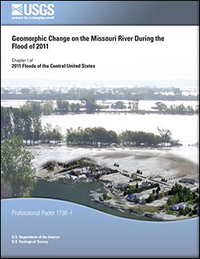Geomorphic change on the Missouri River during the flood of 2011
Links
- More information: USGS Index Page
- Document: Report
- Larger Work: This publication is Chapter I of 2011 floods of the central United States
- Download citation as: RIS | Dublin Core
Abstract
Suggested Citation
Schenk, E.R., Skalak, K.J., Benthem, A.J., Dietsch, B.J., Woodward, B.K., Wiche, G.J., Galloway, J.M., Nustad, R.A., Hupp, C.R., 2014, Geomorphic change on the Missouri River during the flood of 2011: U.S. Geological Survey Professional Paper 1798, vi, 25 p., https://doi.org/10.3133/pp1798I.
ISSN: 2330-7102 (online)
Study Area
| Publication type | Report |
|---|---|
| Publication Subtype | USGS Numbered Series |
| Title | Geomorphic change on the Missouri River during the flood of 2011 |
| Series title | Professional Paper |
| Series number | 1798 |
| Chapter | I |
| DOI | 10.3133/pp1798I |
| Year Published | 2014 |
| Language | English |
| Publisher | U.S. Geological Survey |
| Publisher location | Reston, VA |
| Contributing office(s) | Office of Surface Water |
| Description | vi, 25 p. |
| Larger Work Type | Report |
| Larger Work Subtype | USGS Numbered Series |
| Larger Work Title | 2011 Floods of the Central United States (Professional Paper 1798) |
| Country | United States |
| State | Nebraska, North Dakota, South Dakota |
| Other Geospatial | Missouri River |
| Online Only (Y/N) | Y |


